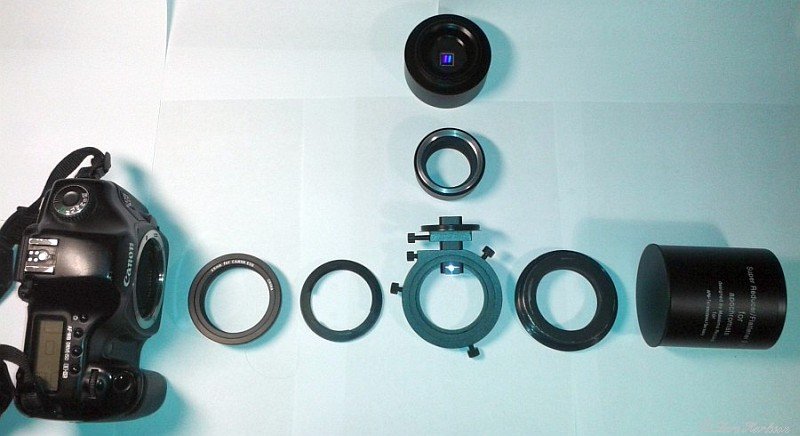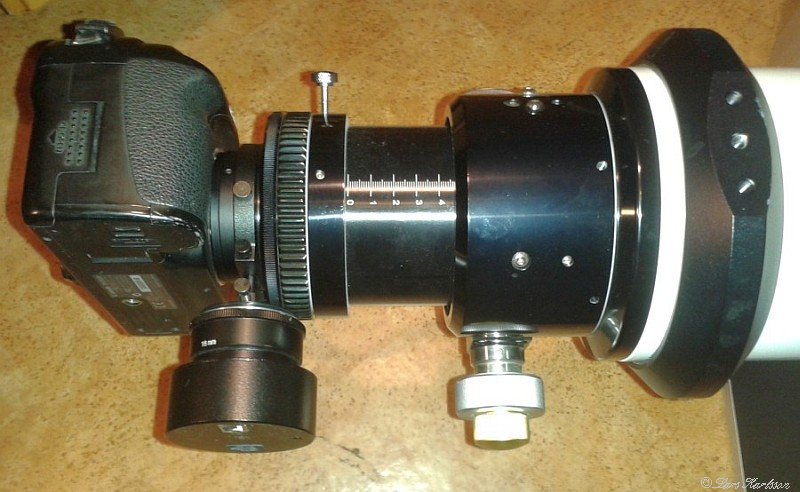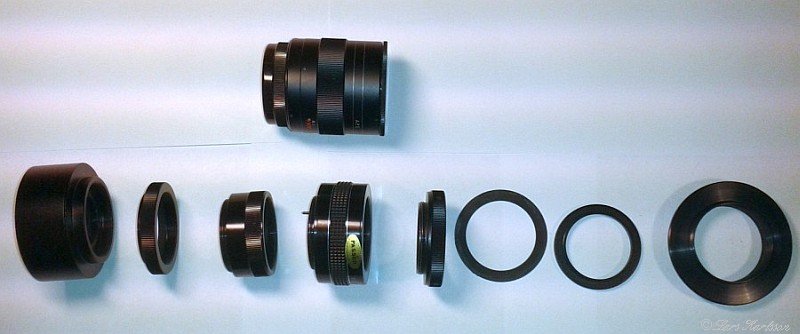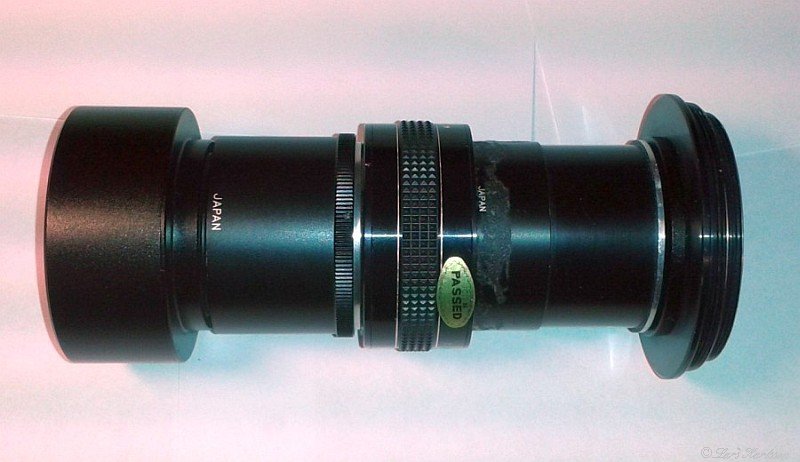|
Advertisement / Annons: |
My astronomy project:
|
Content:
Note: |
1: Overview wide field and planet configuration
Note: Certainly more than I have struggled to get together the mechanics so that the optical parts end up at the right distance. This is my first draft that and I will try it out, thinking it surely are of interest to many so I took some photos to show and wrote some text to it.
First
Goal: 
Here is an overview of the parts, from left to right:
M48 adapters has been selected to handle the full frame camera (which will be a big disappointing later as you will read). Achieved optical length is 73.2mm, 0.3mm difference from the optimal, but some day the camera will be IR filter modified, the optical distance is changed so that margin is good to have. If necessary I put shims between the parts until exact distance is achieved. Unit no. 2 may be replaced with a more compact version that is only 1mm thick in case more accessories has to be mounted. Riccardi field flattener with reducer with 2.5" diameter is in the smallest limit to be used with a full frame camera, optical image circle is about 42mm. But the border is not as sharp so I think it will work pretty good. 
Here you have all the parts assembled, feels quite sensibly, have used threads as much as possible because it is more stable than the 2" pipe coupling. 
Here is the optic package mounted on the telescope. It has not very much space for the guide camera, but the distance will be sufficient if the calculations are correct. Everything is relatively steady, the only thing that's a little bit weak is the bayonet connection to the camera. With the bolt protruding, the entire package can be turned relative the telescope. See also my new tutorial about off-axis adapters.
Second goal: 
Overview of the parts, from left to right:
I chose this Pentax tele extender, not sure if the optical quality is good enough, but provides a good mechanical stability. I already have them so natural to try these first, moreover planet photo is not the main purpose. 
Here are the parts assembled, without T2 to M42 adapters that I will use later. T2 and the Pentax M42 threads is quite similar, differing only in the pitch. But you must have an adapter between them, otherwise the threads will be destroyed. 
Here camera and tele extender attached to the telescope. Steady and good fitness, also possibly to add an additional tele extender.
|
|